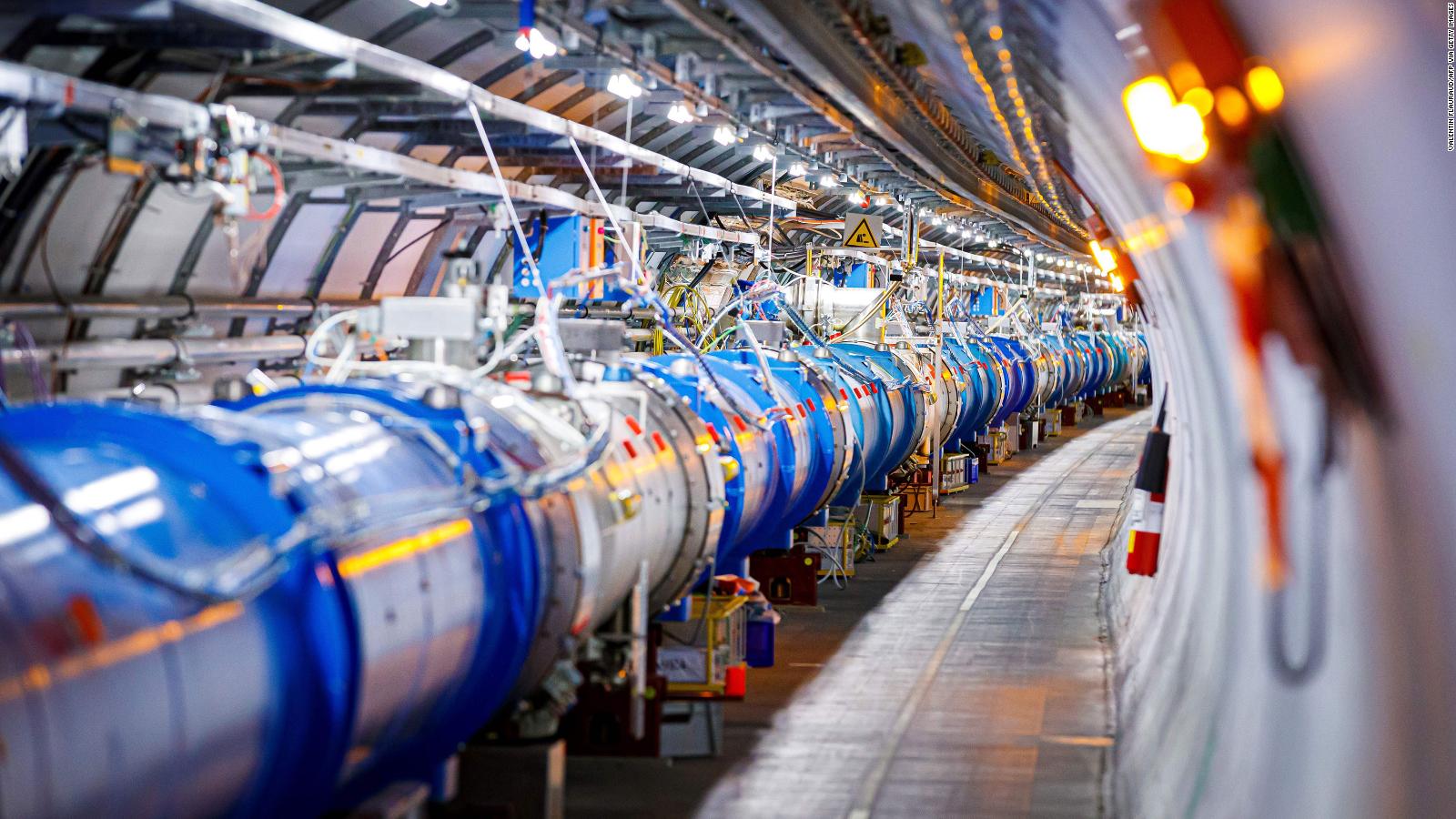(CNN) — A decade ago, the European Organization for Nuclear Research’s (CERN) Large Hadron Collider, Earth’s most powerful particle accelerator, confirmed the existence of a subatomic particle called the Higgs boson, considered the cornerstone of the universe. “Big Bang” billions of years ago.
Now physicists at CERN on the Swiss-French border will restart the collision in an attempt to learn more about the mysteries of the Higgs boson, other subatomic particles and dark matter, an elusive, invisible substance that cannot be seen. , reflect or emit light.
The Large Hadron Collider is a ring with a radius of 27 kilometers and is located deep in the Alps. It is made of superconducting magnets cooled to -271.3 degrees Celsius, which is lower than outer space. The collision smashes the tiny particles together, allowing scientists to observe them and analyze their contents.
Proton beams began spinning through the accelerator complex in April, after three years of maintenance and upgrades.
This Tuesday, scientists at CERN Start collecting data For its experiments, and the Large Hadron Collider will run 24 hours a day for nearly four years. Thanks to improved data-reading and selection systems, as well as new detection systems and computer infrastructure, this is the third time the massive machine has been put to work with greater precision and discovery power than ever before.
“When we investigate, we expect to find something unexpected, surprising. That would be the best result. But of course the answer lies in the hands of nature, and depends on how nature answers the open questions in fundamental physics,” Fabiola said. Gianotti, director general of CERN, posted a video on his website.
“We are looking for answers to questions related to dark matter, why the Higgs boson is so light, and many other open questions.”
Understanding the Higgs Boson
Physicists François Englert and Peter Higgs first theorized the existence of the Higgs boson in the 1960s. The Standard Model of Physics lays the foundation for how fundamental particles and forces interact in the universe. However, the theory fails to explain how particles actually acquire their mass. Particles or bits of matter vary in size and can be larger or smaller than atoms. Electrons, protons, and neutrons, for example, are the subatomic particles that make up an atom. Scientists now believe that the Higgs boson is the particle that gives mass to all matter.
In 2013, a year after the particle was discovered, Englert and Higgs won the Nobel Prize for their visionary prediction. But there is still much that is not known about the Higgs boson, and unlocking its secrets will help scientists understand the universe at its smallest scale and some of the universe’s greatest mysteries.
The Large Hadron Collider, opened in 2008, is the only facility in the world where the Higgs boson can be produced and studied in detail. Third test Started successfully Tuesday at 10:47 a.m. ET.
In the latest round of experiments, CERN scientists will study the properties of matter under extreme conditions of temperature and density, as well as seek explanations for dark matter and other new phenomena, either through direct searches or indirectly, through precise measurements of properties. known particles.
“Although all the results obtained so far are consistent with the Standard Model, there is still much room for new phenomena beyond what this theory predicts,” said CERN theorist Michelangelo Mangano. In a press release.
Dark matter is thought to make up most of the universe and has previously been identified for its ability to create gravitational distortions in space.
“The Higgs boson may point to new phenomena, including some that account for dark matter in the universe,” said Luca Mulcheri, spokesman for the CMS (Compact Muon Solenoid), one of the Big Four experiments at the Large Hadron. collider, which is built around a large electromagnet.
— Sarah Sperry and Nick Thompson contributed reporting.





